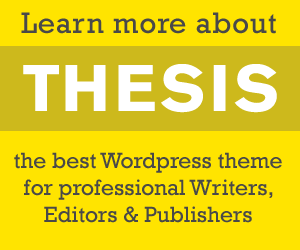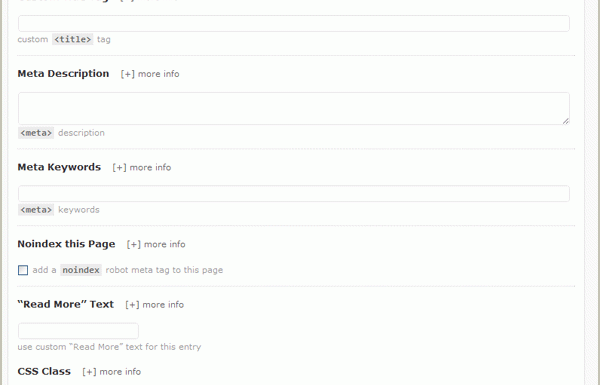 One of the 2 WordPress products I’m proud to be an affiliate reseller of is the Thesis WordPress Theme by DIY Themes (the other is Organic Themes — more on that in a future post).
One of the 2 WordPress products I’m proud to be an affiliate reseller of is the Thesis WordPress Theme by DIY Themes (the other is Organic Themes — more on that in a future post).
For a non-code-loving writer and editor like me—and presumably you—the real selling point about Thesis is the no-hassle, back-end control panel that allows you to control its powerful features with deft and ease.
What this means is we never have to look at, let alone touch, steaming piles of PHP, CSS or HTML — just some well-labeled check boxes and the amusing “Big Ass Save Button” to confirm my changes.
Well-Balanced Readability Design
Any writer, blogger, journalist, editor or publisher worth her salt knows that good readability design is not about flashy, bursting colors or excessive illustrations — it’s about simplicity, elegance, structure and type. 
Readability design is where Thesis takes a holistic high-line. The WordPress theme was built specifically to support the presentation of content, and it does a great job doing so.
Without any alterations, a fresh install of Thesis looks somewhat plain but not ugly. Thanks to some recent upgrades you can now change the colors, add columns, adjust column width, choose your type size, etc. — all through the easy-as-pie visual control panel.
Like, Totally SEO Friendly
 Again, if you’re a content maven and have little penchant or patience for web marketing, Thesis has built-in Search Engine Optimization (SEO) tools.
Again, if you’re a content maven and have little penchant or patience for web marketing, Thesis has built-in Search Engine Optimization (SEO) tools.
This is a major feature, mind you, as SEO is the sister discipline to social media when it comes to attracting readers and building your platform (this isn’t always easy to accept, but you must).
Right under your post box are fields to populate a custom title tag, meta keywords and description, nofollow, etc. 2 quick rules of thumb:
- Titles are ranked high in search algorithms so keep them concise, unique and specific. Lead the title tag with the most important idea of the post.
- Always fill out the meta description. Use it to sell the page in the 1-2 seconds you have with someone scanning it. Keep it to a maximum of 200 characters or about 30 words.
It wasn’t until recently when this blog started ranking in Google for “how to name your blog” that I appreciate the value of SEO.
Customizable to the Hilt
People call Thesis a “framework,” which means if you have an inspired design in mind, chances are it can fit right into Thesis. This means you can use all the publisher-friendly goodies without cramping your style.
The best way to get your design into Thesis is to hire a professional web designer to produce a Photoshop layout of your site, then turn the file over to a WordPress developer.
There are tons of WordPress developers out there. Try to find one that works specifically with Thesis — they’re a very passionate bunch and can be found in the Thesis community/support forums (which of course is included with the purchase of your theme).
Take a look at this screen shot of a new Thesis installation and then compare it to this site, which I had customized. You can also check out the official Thesis gallery.
…And It’s Cool
Design and code don’t always mix well with writing content. Or should I say designers and coders don’t always mix well with content writers. We’re just different breeds.
So let me end with this: you know the people behind Thesis (Brian Clark and Chris Pearson) are pretty cool guys when the default 404 error message says this:
You 404’d it. Gnarly, dude. Surfin’ ain’t easy, and right now, you’re lost at sea. But don’t worry; simply pick an option from the list below, and you’ll be back out riding the waves of the Internet in no time.
- Hit the “back” button on your browser. It’s perfect for situations like this!
- Head on over to the home page.
- Punt.
Click here to purchase the Thesis WordPress Theme. $87 for a single, one-site license or $164 for a developer’s license.
Links in this post are affiliate.


[…] I mentioned in my review of the Thesis WordPress theme, social media is only half of a writer’s self-promotion strategy — SEO is the […]